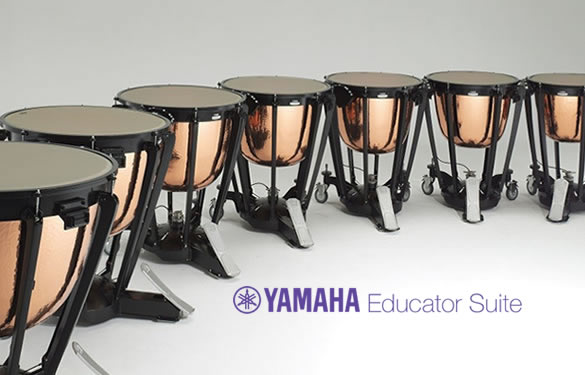For more articles and resources, visit the Yamaha Educator Suite
As a percussionist, there are three things that we should always work on – reading, rolls and ear/listening. I know it is naive to believe that these are the only things to work on, but if you can continue to improve in these areas, you will be more prepared for the future.
Student performers tend to only focus on the next thing they need to prepare for – an audition, a rehearsal or a performance. Believe it or not, this is also true for professional musicians. With my work, teaching, family and playing schedule, I don’t have as much time to spend in the practice room as I would like. But when I feel like skipping practice, I always remember this quote by golf legend Ben Hogan: “Every day you don’t practice, you’re one day further from being good.”
This quote inspires me to keep practicing. I have found that if I practice these three areas every day, I can continue to grow as a musician and maintain my chops.
Reading
All musicians should spend 15 to 30 minutes each day sight-reading. It doesn’t need to be melodic reading (although that it is probably weaker than your rhythmic reading), it just needs to be music you have never seen before.
Where can you get music? The number one source of free, public domain sheet music is IMSLP.org. For sight-reading, I would suggest starting with a Bach or Mozart violin or flute sonata. If you have someone else who wants to do some sight-reading, check out the Bach Inventions. There is so much music on the site, I promise you will never have a problem finding something new to read.
There are many beliefs about how you should sight-read something. Generally, once you play through it once, you aren’t sight-reading any more. Here are my steps:
-
- Scan through the music and see what the most difficult part is going to be. That section will determine my tempo. I always use a metronome when sight-reading because it keeps me “honest.”
- Depending on your level, you can use the metronome on every beat or just the down beat of the measure. Once I figure out my tempo, I make sure I check out the road map and key signature and then start reading.
- Read through the piece without stopping. Once I have read through the piece, I spend 30 to 60 seconds going over the most difficult passage and then I read it again. Sure, the second time is not “sight-reading,” but I think it’s important to improve upon my previous reading of the piece.
Once I have read it a second time, I put it away. Instead of printing all of these pieces, I use my laptop or iPad to view the PDF. It saves paper and I have material to share with my students. I also like sight-reading with other people to add a level of accountability. Vivaldi or Mozart string quartets are perfect for this.
Rolls
Rolls are universal on all percussion instruments and something we need to work on daily to maintain the skills. I do a regime of SD roll exercises that include single stroke, double stroke, triple stroke and multiple bounce rolls. Working on single stroke rolls helps me maintain my timpani and mallet rolls. I enjoy working on double and triple stroke rolls with different fulcrum to accurately execute the different roll types. Two great books for roll development are Developing Dexterity by Mitchell Peters and The Roll by Emil Scholle.
Here is an exercise to work on snare drum rolls:
Ear/Listening
In my opinion, developing your ear is one of the most underrated and under-practiced areas for most musicians. Working on your ear should be an ongoing daily activity. Work on listening and being more aware of what you are doing and what you are hearing.
Here are some suggestions to develop your ear:
-
-
-
- Practice singing intervals. You can use your smartphone and download a piano app and/or a tuning app and incorporate this into your daily practice.
- Play duets and chamber music. This will help you work on your ensemble listening skills.
- Listen to a lot of different music styles. It’s great to listen to your favorite group, but during the week try and listen to at least one artist you have never heard before. Practice playing with the recording and transcribing the grooves on the album.
- Practice with your metronome more often.
- Go hear live performances and talk about what you heard with a friend or colleague. See if you are hearing the same things that other people are hearing.
- Videotape and/or record audio of your rehearsals and performances. When you are ready to run through something, record it. When you’re standing behind an instrument, you hear things a lot differently than you do from an audience’s point of view.
-
-
Reading, rolls and listening – these are the three key areas all musicians should continue to develop to be successful. Honing your skills in these areas will help you further develop your musical skills.
This article was originally published on the Yamaha Music USA blog.
For more articles and resources, visit the Yamaha Educator Suite



